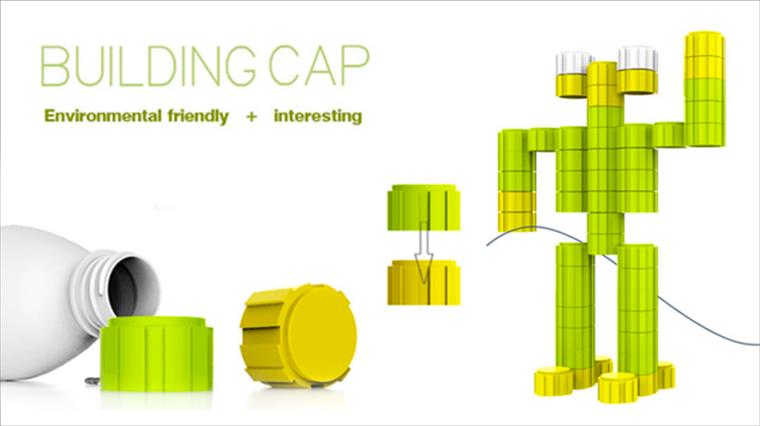A Comprehensive Guide

GUEST POST from Art Inteligencia
Change is the only constant in today’s dynamic business environment. Amidst rapid technological advancements, evolving market demands, and global economic shifts, organizations must continuously adapt to survive and thrive. As a thought leader in human-centered innovation and change, I’ve distilled critical change management strategies that foster organizational growth. In this article, I’ll explore these strategies and elucidate them through two compelling case studies.
1. Embrace a Culture of Continuous Improvement
Successful organizations cultivate a culture that encourages constant enhancement and innovation. This involves empowering employees at all levels to identify inefficiencies and propose improvements. Implementing a continuous improvement mindset can lead to sustained, incremental growth and resilience against market shocks.
Case Study: Toyota
Toyota’s adoption of the Kaizen philosophy epitomizes a culture of continuous improvement. “Kaizen” translates to “change for better,” a principle that Toyota has ingrained in its DNA. Employees at all levels, from assembly line workers to executives, are encouraged to contribute ideas. Daily team meetings, called “morning markets,” provide a forum for discussing suggestions.
One notable initiative was the introduction of the Andon cord—a system allowing any worker to halt production if they noticed a defect. This not only improved quality but also demonstrated Toyota’s commitment to giving employees ownership in the production process. Over time, this approach reduced defects, cut costs, and bolstered Toyota’s reputation for reliability, thereby increasing market share and driving growth.
2. Foster Agile Leadership and Decision-Making
Navigating change requires leaders who are agile and adaptable. Agile leaders can pivot quickly in response to disruptions and ensure that their organization remains aligned with the market. They cultivate a work environment where swift, yet informed decision-making is the norm
Case Study: Spotify
Spotify’s organizational growth can be strongly attributed to its adoption of the Agile framework. Instead of traditional top-down management, Spotify operates in small, autonomous teams known as “squads.” Each squad is responsible for a specific feature or component of the platform and functions like a mini-startup within the company.
These squads are empowered to make decisions and execute changes independently, enabling faster development cycles and quicker responses to market needs. This agility allowed Spotify to outmaneuver larger competitors, consistently deliver innovative product features, and rapidly expand its global user base.
3. Engage Stakeholders Through Transparent Communication
Clear and consistent communication is crucial for any change initiative. Engaging stakeholders—from employees to external partners—through transparent communication builds trust and mitigates resistance to change.
Case Study: GE’s Transformation Under Jack Welch
When Jack Welch assumed the role of CEO at General Electric (GE), he embarked on a massive transformation program known as “boundaryless behavior.” Welch’s vision was to dismantle bureaucratic silos and create a more integrated, competitive company.
One of his critical strategies was transparent and direct communication. Welch held regular town hall meetings, shared the company’s financial performance openly, and involved employees in decision-making processes. Training programs known as “Work-Outs” were established where employees could voice concerns and offer solutions directly to executives. This open dialogue not only enhanced employee morale but also facilitated smoother implementation of change initiatives, ultimately fueling GE’s growth into a powerhouse conglomerate.
4. Leverage Data-Driven Decision Making
Emphasizing data-driven decision-making ensures that organizations navigate change with precision and confidence. By leveraging data analytics, companies can identify trends, pinpoint inefficiencies, and forecast the impact of potential changes.
Case Study: Netflix’s Evolution
Netflix’s transition from a DVD rental service to a leading streaming platform and content creator exemplifies data-driven decision making. Initially, Netflix used data analytics to revolutionize its DVD rental service, predicting customer preferences and optimizing inventory.
As the market evolved, Netflix pivoted to streaming, leveraging viewer data to curate personalized recommendations and drive user engagement. Their data-driven approach also extended to content creation; by analyzing viewer metrics, Netflix identified gaps in the market and produced popular original series like “House of Cards” and “Stranger Things,” which significantly boosted subscriptions and propelled the company’s growth.
5. Develop Resilience Through Continuous Learning
Building an organization that champions continuous learning and skill development prepares the workforce to adapt to future challenges and technological advancements. By investing in continuous professional development, organizations can retain talent and foster innovation.
Case Study: AT&T’s Workforce 2020 Initiative
AT&T recognized the need to adapt to the digital era and launched the Workforce 2020 initiative. This comprehensive, multi-year strategy aimed to reskill its workforce to meet the demands of emerging technologies.
AT&T partnered with leading online education platforms and provided employees with resources to gain new skills in data science, cybersecurity, and other critical areas. By 2020, over half the workforce had participated in reskilling programs, bolstering the company’s innovative capabilities and maintaining its competitive edge in the fast-evolving tech landscape.
Conclusion
Implementing effective change management strategies is not a one-size-fits-all proposition. The success stories of Toyota, Spotify, General Electric, Netflix, and AT&T highlight how a tailored approach grounded in continuous improvement, agile leadership, transparent communication, data-driven decision making, and continuous learning can drive organizational growth. By learning from these exemplars and applying these strategies thoughtfully, organizations can navigate change successfully and foster sustainable growth.
Bottom line: Futurology is not fortune telling. Futurists use a scientific approach to create their deliverables, but a methodology and tools like those in FutureHacking™ can empower anyone to engage in futurology themselves.
Image credit: Pexels
![]() Sign up here to get Human-Centered Change & Innovation Weekly delivered to your inbox every week.
Sign up here to get Human-Centered Change & Innovation Weekly delivered to your inbox every week.
 Some business models and products have been around so long that we just take them for granted, while others concepts that are becoming new business models are so new that we’re not quite sure what to expect. It is probably easiest to explain what I mean and why this juxtaposition is important by looking at a few examples. Most of these examples involve challenging our orthodoxies.
Some business models and products have been around so long that we just take them for granted, while others concepts that are becoming new business models are so new that we’re not quite sure what to expect. It is probably easiest to explain what I mean and why this juxtaposition is important by looking at a few examples. Most of these examples involve challenging our orthodoxies. Chicken processors used to throw the feet away after processing a truckload of chickens, but after they discovered that chicken feet are a delicacy in several Asian countries, they stopped throwing them away and instead started exporting them. In fact, chicken feet sell for more per pound than chicken breasts in China.
Chicken processors used to throw the feet away after processing a truckload of chickens, but after they discovered that chicken feet are a delicacy in several Asian countries, they stopped throwing them away and instead started exporting them. In fact, chicken feet sell for more per pound than chicken breasts in China.
 Britain has always been a hotbed of innovation, and the country that brought us Pret a Manger and Innocent smoothies brings us this tasty treat. Mr. Sherick’s Shakes brings people a little bit of luxury to their day in the form of their high quality milkshakes.
Britain has always been a hotbed of innovation, and the country that brought us Pret a Manger and Innocent smoothies brings us this tasty treat. Mr. Sherick’s Shakes brings people a little bit of luxury to their day in the form of their high quality milkshakes.  People always love something new and different, even if it is something old that has disappeared from the market. This is why fashion runs in cycles, and in a mature category like soft drinks there is no reason why we shouldn’t keep these principles in mind and see if now is the time to bring something back, or to see if there is an orthodoxy that we shouldn’t now look at challenging to see if an opportunity might not be created.
People always love something new and different, even if it is something old that has disappeared from the market. This is why fashion runs in cycles, and in a mature category like soft drinks there is no reason why we shouldn’t keep these principles in mind and see if now is the time to bring something back, or to see if there is an orthodoxy that we shouldn’t now look at challenging to see if an opportunity might not be created. 